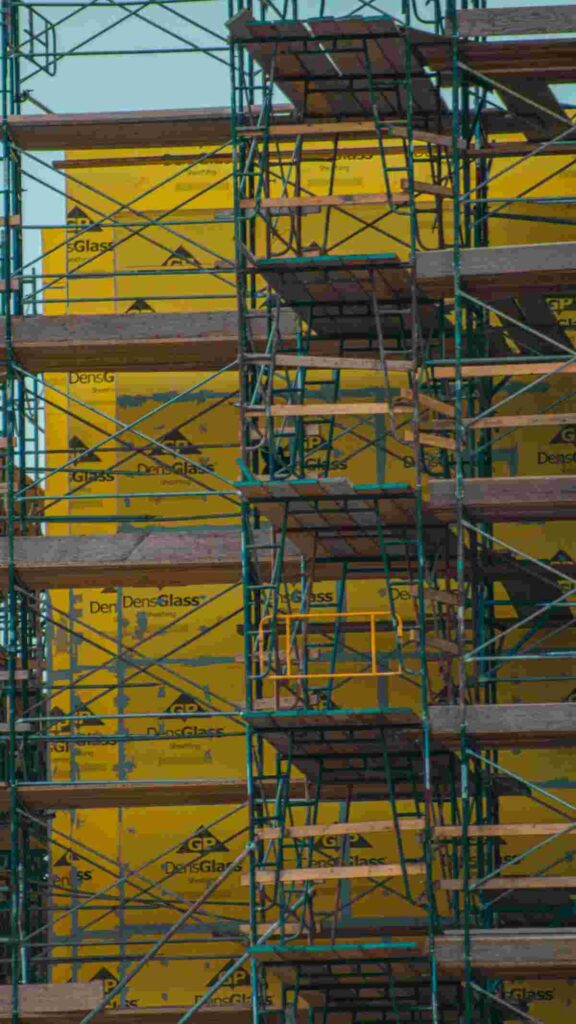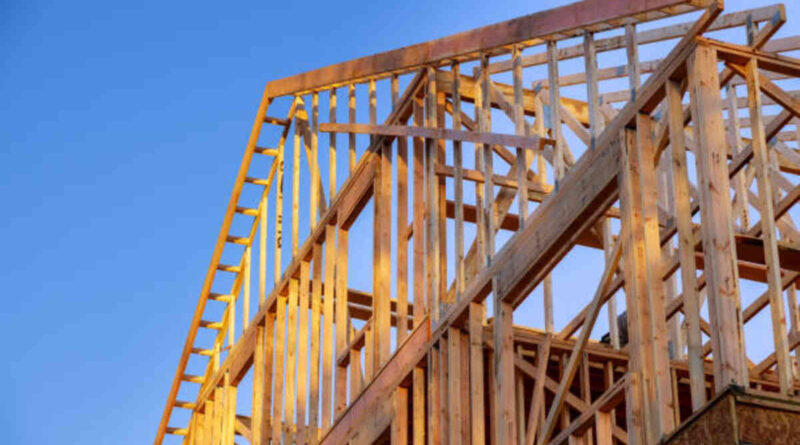Benefits of Using Frame Construction Techniques
Frame construction has become a popular choice in the building industry, known for its versatility, strength, and efficiency. Whether it’s for residential or commercial buildings, using frame construction techniques, particularly steel framing, offers numerous benefits. This article explores these advantages and explains why frame construction might be the right choice for your next project. Select the best timber frame kits.
What is Frame Construction?
Frame construction is a building technique that uses a skeleton framework to support the weight of the building. This framework can be made from a variety of materials, including wood and steel. Steel framing, in particular, involves using steel columns and beams, which are then covered with other materials to create walls and floors.
Understanding the Basics
At its core, frame construction involves a skeleton-like structure that supports the building’s weight. This skeleton is crucial as it determines the building’s shape and stability. Traditionally, materials like wood and steel are most commonly used due to their availability and structural properties. Understanding these basics helps in selecting the right type of frame construction for specific building requirements.
Material Variety
The choice of material plays a pivotal role in frame construction. Wood, steel, and concrete are popular choices, each offering unique advantages. Wood is cost-effective and easy to work with, while steel provides unmatched strength and durability. Concrete, although more labor-intensive, offers superior fire resistance. Selecting the right material depends on the project’s needs, budget, and environmental considerations.
Historical Context
Frame construction isn’t a new concept. This technique has evolved over centuries, adapting to technological advancements and changing architectural styles. Initially, wood was the predominant material due to its availability. However, the industrial age brought steel into the limelight, transforming construction practices. Understanding this historical evolution provides insights into current trends and future possibilities in frame construction.
Types of Frame Construction
Frame construction can be categorized into different types based on the materials used. Each type offers distinct advantages and is suitable for different kinds of projects.
Wood Framing
Traditionally used in residential construction, wood framing is cost-effective and easy to work with. Wood offers flexibility in design, allowing for intricate architectural details. However, it may not be as durable or fire-resistant as other materials. Despite these limitations, wood remains a popular choice for its affordability and ease of use, especially in regions with abundant forest resources.
Steel Framing
Increasingly popular, steel framing is known for its strength, durability, and resistance to pests and fire. Steel’s high strength-to-weight ratio allows for innovative architectural designs, enabling larger open spaces without compromising structural integrity. It is often used in both residential and commercial buildings, making it a versatile choice for modern construction projects.
Concrete Framing
Used primarily in commercial buildings, concrete framing provides excellent strength and fire resistance. Although more expensive and labor-intensive, concrete’s durability and thermal mass make it ideal for large structures. The material’s ability to withstand extreme weather conditions and provide soundproofing adds to its appeal, making it a preferred choice for high-rise buildings and industrial facilities.
Advantages of Steel Framing
Steel framing offers several distinct benefits over other framing materials, making it a top choice for many builders and architects.
Strength and Durability
Steel is incredibly strong and can support more weight than wood without warping or bending. This makes it ideal for buildings that need to withstand heavy loads or are located in areas prone to harsh weather conditions. Its durability ensures long-lasting structures, reducing the need for frequent repairs and maintenance. This inherent strength makes steel a reliable choice for both residential and commercial applications.
Fire Resistance
Unlike wood, steel does not burn, making it a safer option in the event of a fire. This inherent fire resistance can lead to reduced insurance costs and increased safety for occupants. Additionally, steel’s non-combustible nature helps in meeting stringent fire safety regulations, providing peace of mind for building owners. Incorporating steel into building designs enhances overall safety without compromising on aesthetic appeal.
Pest Resistance
Steel framing is impervious to termites and other pests that can wreak havoc on wooden structures. This means less maintenance and repair costs over the lifespan of the building. The absence of pest-related concerns allows for a healthier living environment, free from harmful chemicals often used in pest control. Steel’s resistance to biological deterioration ensures the structural integrity of buildings, contributing to their longevity.
Sustainable and Eco-friendly
Steel is 100% recyclable, making it an environmentally friendly choice. Using steel framing can contribute to green building certifications and help reduce the overall carbon footprint of a construction project. The recycling process of steel consumes less energy compared to producing new steel, further enhancing its sustainability credentials. By choosing steel, builders can contribute to a circular economy, promoting resource efficiency and environmental conservation.
Design Flexibility
Steel framing allows for greater design flexibility. Its strength-to-weight ratio enables architects to design larger open spaces without the need for many load-bearing walls. This can result in more aesthetically pleasing and functional spaces. The versatility of steel supports creative architectural expressions, accommodating various design preferences. Whether for modern skyscrapers or innovative residential homes, steel framing adapts to diverse architectural styles seamlessly.
Frame Design Considerations
When using frame construction techniques, particularly steel framing, there are several design considerations to keep in mind:
Load-Bearing Capacity
Understanding the load-bearing capacity of the frame is crucial. This involves calculating the weight of the building materials, occupants, furniture, and other factors that will affect the structure. Steel’s high load-bearing capacity makes it an excellent choice for buildings with large spans or open spaces. Proper assessment ensures the safety and stability of the structure, preventing potential risks associated with overloading.
Thermal Conductivity
Steel conducts heat, which can lead to increased energy costs if not properly insulated. Incorporating effective insulation materials and techniques into the design can help mitigate this issue and improve the building’s energy efficiency. Choosing the right insulation not only enhances comfort but also reduces energy consumption, contributing to lower utility bills. Advanced insulation solutions, like thermal breaks and reflective barriers, can significantly enhance energy performance.
Acoustic Performance
While steel frames offer many benefits, they can also transmit sound more easily than other materials. To enhance acoustic performance, it’s essential to use soundproofing materials and techniques during construction. Incorporating materials such as acoustic panels, resilient channels, and insulation can create a quieter indoor environment. Effective sound management enhances occupant comfort, making steel-framed buildings suitable for various applications, from residential to commercial spaces.

Cost Implications
The cost of using steel framing can vary depending on several factors, such as location, building design, and material availability. While the initial cost of steel may be higher than wood, the long-term savings from reduced maintenance and insurance costs can make it a more cost-effective choice over time.
Initial Investment
Steel framing may require a larger upfront investment than traditional wood framing. However, the benefits of durability, strength, and reduced maintenance costs can offset this initial expense. Investing in quality materials ensures the longevity of the structure, providing value for money over the building’s lifecycle. Budget planning should consider these long-term savings, making steel framing a financially sound option.
Long-Term Savings
The durability and low maintenance of steel framing can lead to significant long-term savings. Additionally, the energy efficiency and safety benefits can result in lower utility bills and insurance premiums. Over time, the cost benefits become evident, as steel-framed buildings require fewer repairs and replacements. Strategic financial planning and life-cycle cost analysis can highlight these savings, aiding in informed decision-making.
Market Trends and Availability
Understanding market trends and material availability is crucial for cost management. The fluctuating prices of steel can impact the overall project budget. Staying informed about industry trends and supply chain dynamics helps in making cost-effective purchasing decisions. Collaborating with suppliers and leveraging bulk purchasing strategies can further optimize costs, ensuring project feasibility and profitability.
Conclusion
Frame construction, particularly steel framing, offers numerous benefits for modern building projects. Its strength, durability, fire resistance, and design flexibility make it an ideal choice for both residential and commercial buildings. By understanding the advantages and design considerations of steel framing, builders and architects can make informed decisions that lead to successful, sustainable projects.
Embracing steel framing techniques can lead to safer, more efficient, and environmentally friendly buildings that stand the test of time. Whether you’re a builder, architect, or homeowner, considering steel framing for your next project could be a smart investment in the future. The choice not only enhances structural integrity but also aligns with sustainable building practices, contributing to a greener and more resilient built environment.
